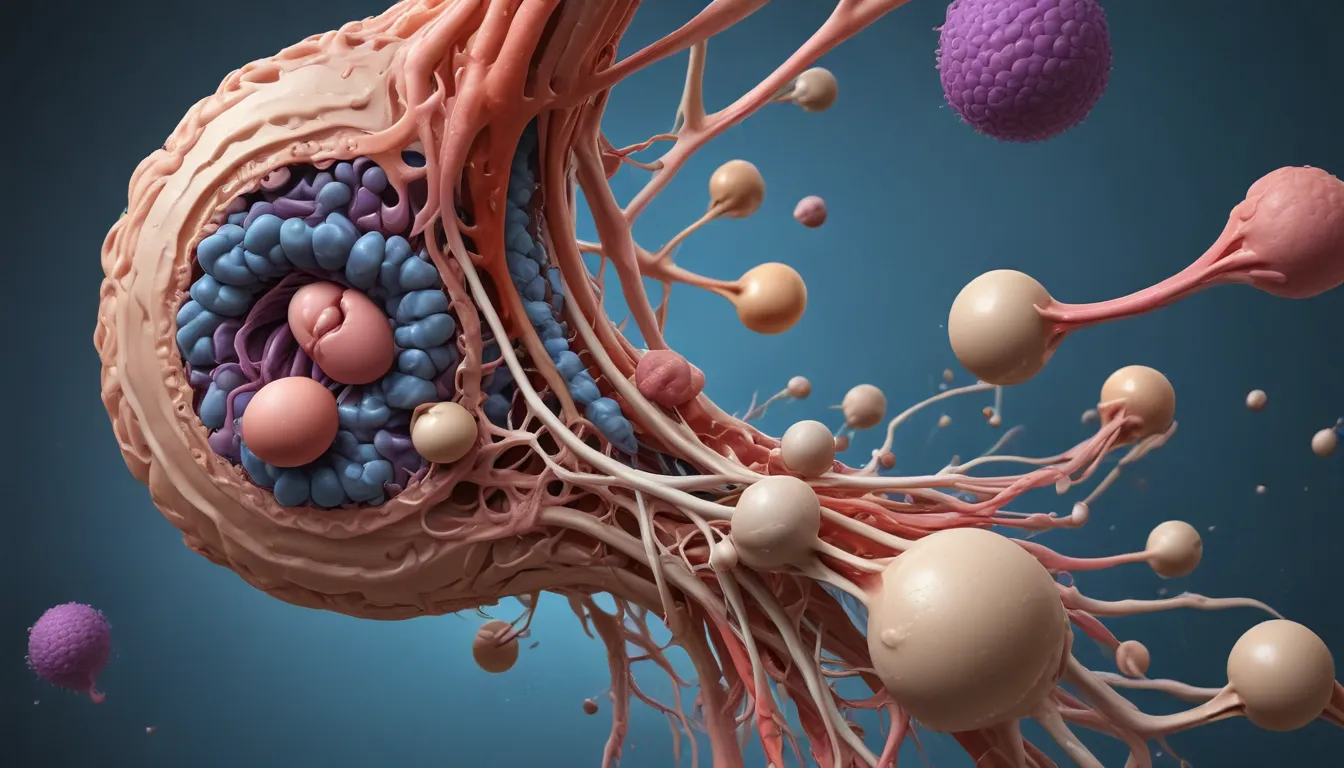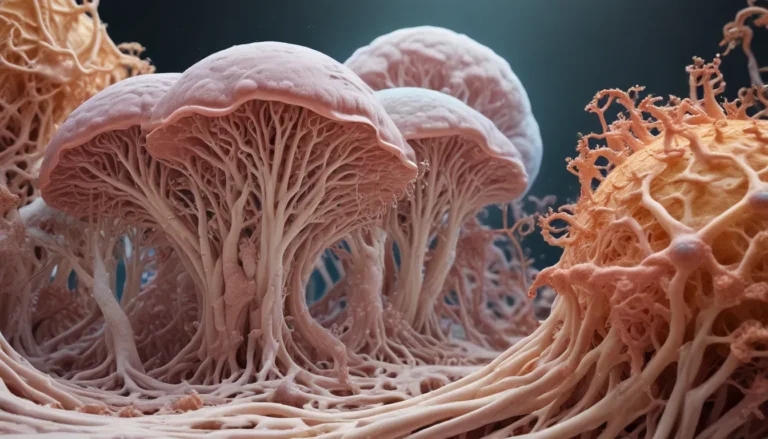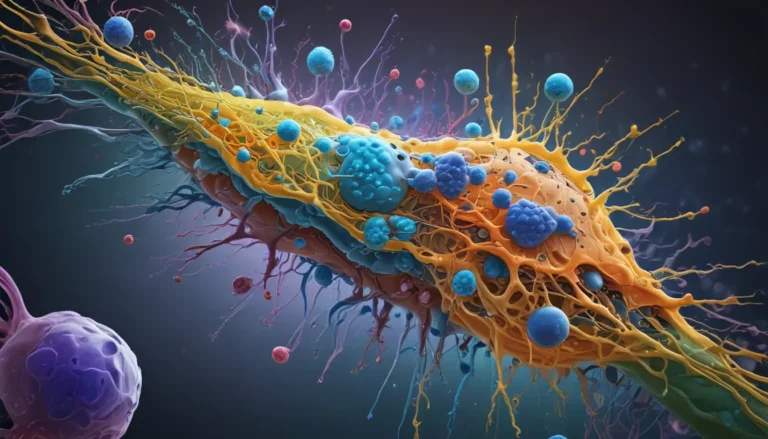A Note About Images: The images used in our articles are for illustration purposes only and may not exactly match the content. They are meant to engage readers, but the text should be relied upon for accurate information.
Protein trafficking, also known as intracellular protein transport, is a captivating process that serves as a fundamental element in maintaining cellular functionality. This intricate system involves the movement of proteins within and between various cellular compartments, such as the endoplasmic reticulum, Golgi apparatus, and lysosomes. Not only does protein trafficking ensure the precise delivery of proteins to their designated destinations, but it also governs a multitude of cellular processes, including signal transduction, metabolism, and immune response.
In this article, we will delve into 19 captivating facts about protein trafficking that shed light on the complexity and significance of this cellular mechanism. From the foundational discovery of protein transport pathways to the involvement of specific proteins in trafficking, we will embark on an educational journey through the realm of intracellular protein movement. So, let’s uncover the mysteries and marvels of protein trafficking together!
Protein Trafficking: Vital for Cellular Organization and Function
Protein trafficking plays a vital role in maintaining cellular homeostasis by guaranteeing that proteins are delivered to their designated locations within the cell. This intricate process is essential for the proper functioning of cells and is crucial for ensuring that proteins perform their specific functions efficiently and effectively.
Proteins’ Journey Begins in the Endoplasmic Reticulum (ER)
The endoplasmic reticulum serves as the starting point for protein trafficking, where proteins are synthesized and undergo crucial post-translational modifications. This initial step in the protein trafficking pathway sets the foundation for further transport and processing of proteins within the cell.
Transport Vesicles: The Shuttles of Protein Trafficking
Transport vesicles, small membrane-bound sacs, act as the primary mode of transportation for proteins between different cellular compartments. These vesicles serve as essential “shuttles” that facilitate the movement of proteins throughout the cell, ensuring their timely delivery to the required destinations.
The Golgi Apparatus: A Central Hub for Protein Trafficking
The Golgi apparatus acts as a central processing center for proteins arriving from the endoplasmic reticulum. Here, proteins undergo further processing and sorting before being directed to their final destinations within the cell. The Golgi apparatus plays a pivotal role in orchestrating the flow of proteins through the trafficking pathways.
The Intricacies of Protein Trafficking Pathways
Protein trafficking occurs through distinct pathways, namely the constitutive secretory pathway and the regulated secretory pathway. These pathways provide cells with specialized mechanisms for directing proteins to specific destinations based on varying cellular needs and signals.
Precision and Regulation: Key Elements of Protein Trafficking
Cells implement elaborate regulatory mechanisms to ensure the accurate delivery of proteins to their designated locations. This precision in protein trafficking is essential for preventing errors, maintaining cellular integrity, and facilitating the efficient functioning of cellular processes.
Protein Trafficking: A Key Player in Signal Transduction
Proteins involved in signaling pathways rely on efficient trafficking mechanisms to reach the cell membrane or specific organelles. This precise trafficking of signaling proteins is crucial for enabling effective communication within the cell and regulating various cellular responses.
The Crucial Role of Protein Trafficking in Immune Function
Proper protein trafficking is vital for the development of immune cells, antigen presentation, and the regulation of immune responses. The accurate trafficking of immune-related proteins ensures the effective functioning of the immune system and its ability to combat pathogens.
Exploiting Protein Trafficking: Viral Hijacking
Certain viruses can exploit cellular protein trafficking pathways to facilitate their replication and evade the immune system. By hijacking the host cell’s trafficking machinery, viruses can optimize their replication processes and evade detection by the immune system.
Disease Links: Protein Trafficking Abnormalities
Disruptions in protein trafficking have been associated with various diseases, including neurodegenerative disorders, metabolic diseases, and cancer. Understanding the role of protein trafficking in disease pathology is crucial for developing targeted interventions and therapeutic strategies.
Protein Trafficking’s Universality Across Eukaryotic Cells
From simple yeast to complex human cells, protein trafficking is a universal process that is essential for the survival of all eukaryotic cells. This fundamental mechanism underlies the proper functioning of cells and is indispensable for maintaining cellular integrity and functionality.
Spatial and Temporal Regulation of Protein Trafficking
Protein trafficking can be spatially and temporally regulated in response to cellular signals and cues. This dynamic regulation allows cells to modulate protein localization based on changing environmental conditions and cellular requirements, providing adaptability in protein trafficking mechanisms.
Consequences of Protein Trafficking Defects: Protein Accumulation
Impaired protein trafficking can lead to the accumulation of misfolded or damaged proteins within the cell. This accumulation can result in cellular dysfunction, contributing to the development of diseases such as Alzheimer’s and Parkinson’s, where protein aggregation plays a significant role.
Environmental Influences on Protein Trafficking
External factors such as changes in temperature, pH levels, and stress conditions can influence the efficiency of protein trafficking within cells. These environmental influences can impact the cellular trafficking machinery, affecting protein transport and cellular responses to external stimuli.
Protein Trafficking: Implications in Synaptic Plasticity
During synaptic plasticity, the process by which neural connections are strengthened or weakened, protein trafficking plays a critical role. The precise trafficking of receptors and signaling molecules to synapses is essential for modulating synaptic activity and facilitating neural communication.
Protein Trafficking in Embryonic Development
Proper protein trafficking is essential for embryonic development, ensuring that the right proteins are delivered to the right locations during critical stages of embryogenesis. The accurate trafficking of developmental proteins is crucial for orchestrating key processes in embryonic growth and differentiation.
Dynamic Nature of Protein Trafficking
Proteins can be continuously shuttled between different cellular compartments in response to changing cellular demands and environmental cues. This dynamic nature of protein trafficking allows cells to adapt to varying conditions and maintain cellular homeostasis effectively.
Post-Translational Modifications: Regulating Protein Trafficking
Post-translational modifications, such as phosphorylation and ubiquitination, play a significant role in regulating protein trafficking. These modifications can influence protein stability, localization, and trafficking dynamics, providing cells with additional mechanisms for modulating protein trafficking processes.
Therapeutic Advancements Through Protein Trafficking Research
Advancements in understanding protein trafficking mechanisms have paved the way for the development of targeted therapies for a range of diseases. Conditions associated with protein trafficking defects, including cystic fibrosis and lysosomal storage disorders, can benefit from the insights gained through protein trafficking research, leading to improved treatment strategies.
Protein trafficking represents a captivating field of study that continues to unravel the complexities of cellular biology. From its fundamental role in cellular function to its implications in disease pathology and therapeutic development, the study of protein trafficking offers a wealth of opportunities for scientific exploration and discovery. By delving into the intricacies of protein trafficking and its impact on cellular processes, researchers can further enhance our understanding of the inner workings of cells and drive innovations in various scientific disciplines.
FAQs: Exploring Common Queries About Protein Trafficking
-
What is protein trafficking?
Protein trafficking is the process through which proteins are transported to specific locations within a cell, involving various mechanisms such as vesicular transport, protein sorting, and signal recognition. -
Why is protein trafficking important?
Protein trafficking is crucial for maintaining cellular homeostasis and proper function, ensuring that proteins reach their designated destinations to carry out specific cellular functions effectively. -
How are proteins targeted for trafficking?
Proteins are targeted for trafficking based on specific signals or motifs present within their amino acid sequences, which are recognized by trafficking machinery to direct the proteins to their intended compartments. -
What are the different pathways involved in protein trafficking?
Several pathways are involved in protein trafficking, including the endoplasmic reticulum to Golgi apparatus pathway, endocytic pathway, secretory pathway, and retrograde pathway, each serving distinct purposes in protein delivery. -
Can protein trafficking be disrupted?
Yes, disruptions in protein trafficking can lead to various diseases and disorders, affecting cellular function, signal transduction, and contributing to the development of pathological conditions. -
What techniques are used to study protein trafficking?
Researchers utilize a variety of techniques, including fluorescence microscopy, live-cell imaging, molecular biology approaches, and biochemical assays, to study protein trafficking and visualize the movement of proteins within cells. -
Are there therapeutic implications of studying protein trafficking?
Studying protein trafficking has significant therapeutic implications, as understanding the mechanisms of protein trafficking can aid in developing targeted therapies for diseases associated with trafficking abnormalities, such as cancer and neurodegenerative disorders.
Protein trafficking’s captivating facts underscore its critical role in cellular organization, disease progression, and therapeutic advancements. From its inception in the endoplasmic reticulum to its transport via vesicles and processing in the Golgi apparatus, protein trafficking emerges as a highly regulated, dynamic process essential for immune function, signal transduction, and embryonic development. Environmental influences and post-translational modifications offer additional layers of complexity to this intricate process, emphasizing its importance in biological processes and potential for transformative discoveries. Exploring the complexities of protein trafficking not only enriches our understanding of cellular biology but also sets the stage for innovative breakthroughs in scientific research and therapeutic interventions.
Our commitment to delivering informative and engaging content drives our pursuit of providing credible and insightful information to our readers. Each fact shared on our platform is contributed by individuals like you, offering a diverse range of perspectives and knowledge. Our dedicated editors meticulously review each submission to ensure the highest standards of accuracy and reliability, guaranteeing that the facts we present are not only fascinating but also authentic. Trust in our unwavering dedication to quality and authenticity as we continue to explore, learn, and grow together.






